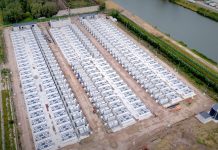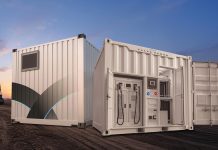
Government and regulators must focus on building a smart power system without delay, according to the National Infrastructure Commission (NIC).
A report by the unit, headed by Lord Adonis, urges Decc, Ofgem and National Grid to align smartgrid building blocks of demand-side response and battery storage together with local grid control. That would lead to lower investment in new power stations and potential bill savings of £8bn per annum by 2030, according to the report. Better interconnection with Europe must also be a priority, said the NIC.
Investors “queuing up” for storage
The Commission said while businesses were “queuing up” to invest in subsidy-free energy storage, market regulation was behind the times. It said those market barriers must be addressed by Decc and Ofgem by Spring 2017. It also urged the regulator to expedite work that will allow distribution network operators (DNOs) to own and operate storage assets. The government, likely having seen these recommendations, said last week that those rules would be reviewed.
The rise of the DSO
The report said there was no immediate priority to create an independent system operator, giving National Grid the green light to carry on its work as both transmission grid owner and operator as well as delivery agent of much of national energy policy.
However, the Commission called for local grid operators to be given the same kind of dynamic demand management duties as the national system operator – and collaborate much more closely. That effectively paves the way for DNOs to become DSOs – or distribution system operators – which will create an entirely new function for traditional wires businesses.
A move to the DSO model would potentially address conflicting signals at national and local levels, so that, if the national system operator turns off one generator for example, the local system operator does not simply end up bringing on another source of power due to lack of visibility and communication between the two systems.
Some DNOs have already begun this transition. Western Power Distribution, for example, is dividing its operations to manage the two distinct roles DNOs will find themselves playing.
Demand-side response
Growth of demand flexibility, or demand-side response, must also be expedited, said the report.
Ofgem must start an immediate review of demand-side response regulations and commercial arrangements, said the NIC, to make participation in the market easier. It also wants clarification on the role of aggregators. This review must take no more than a year, said the Commission. Meanwhile, Decc should make it easier for demand response providers to take part in the capacity market.
Government, regulator and National Grid should also raise awareness of demand-side opportunities to businesses, said the report, with more commercial pilots established and evaluated.
It suggested government could be the first to establish these by implementing demand-response across its estate.
Read the full report here.
Related stories:
Free download: Demand side response report 2015
Decc commits to annual plan and to consult on energy storage
Investors urge Decc to give longer term signals on energy policy
Major changes to capacity market proposed
Hot technology: energy storage via heat battery
Western Power Distribution ramps up demand-response trials, calls for participants
Smart grids ‘require local control and businesses must play or pay’
National Grid must simplify demand response to scale UK market
40% of firms say they could shift energy use as National Grid asks them to turn up
Dong enters demand-side response market with wind power balancing service
National Grid buys 475MW of demand response to cover winter
2016: the year half hourly settlement will hit your power bill
Government to consult on demand response in spring
Energy Technologies Institute: Let private firms run smartgrid trials
Flexitricity blasts transitional capacity market as Npower plots supermarket sweep
Grid buys 3.6GW of back up power to prevent blackouts
Flexitricity warns demand response cannot be rushed as winter looms
National Infrastructure Commission to focus on energy storage and demand response
Tempus: A five year old can see capacity market is anticompetitive
National Grid plots superfast grid balancing service
Many major energy users can’t be flexible, says manufacturing chief
National Grid moots demand side response rule changes as winter power margins tighten
Keep calm and scale demand response, says Scots energy inquiry
National Grid flags demand response changes, urges suppliers and TPIs to deliver
National Grid must simplify demand response to bring in UK businesses
Ofgem boss flags rule changes to speed demand response
National Grid launches major demand side push
Demand response: Suppliers and aggregators ignoring 80% of UK firms
UK firms with CHP plant could be paid to stop exporting power
National Grid: No margin? No sweat
Lord Redesdale ‘puts money on brownouts or blackouts by year end’
Utilitywise bets against Lord Redesdale on blackouts risk
Demand response provider teams with Honeywell, touts for new business
Free report: Directors’ energy outlook report 2016
Free report: How to scale demand-side response
Free report: How to finance energy efficiency
Follow us at @EnergystMedia. For regular bulletins, sign up for the free newsletter.




With all the numerous industry changes and conflicting policies what strategy & projects should the commercial customer be investing in to ensure alignment with industry thinking going forward?
Good question. Anything that improves energy/resource efficiency and value without reliance on subsidy/policy is probably too glib an answer.
These reports might be useful:
https://energystst.wpengine.com/directors/
https://energystst.wpengine.com/dsr/
https://energystst.wpengine.com/financing-energy-efficiency-report-2015/
Any experts care to add some advice?